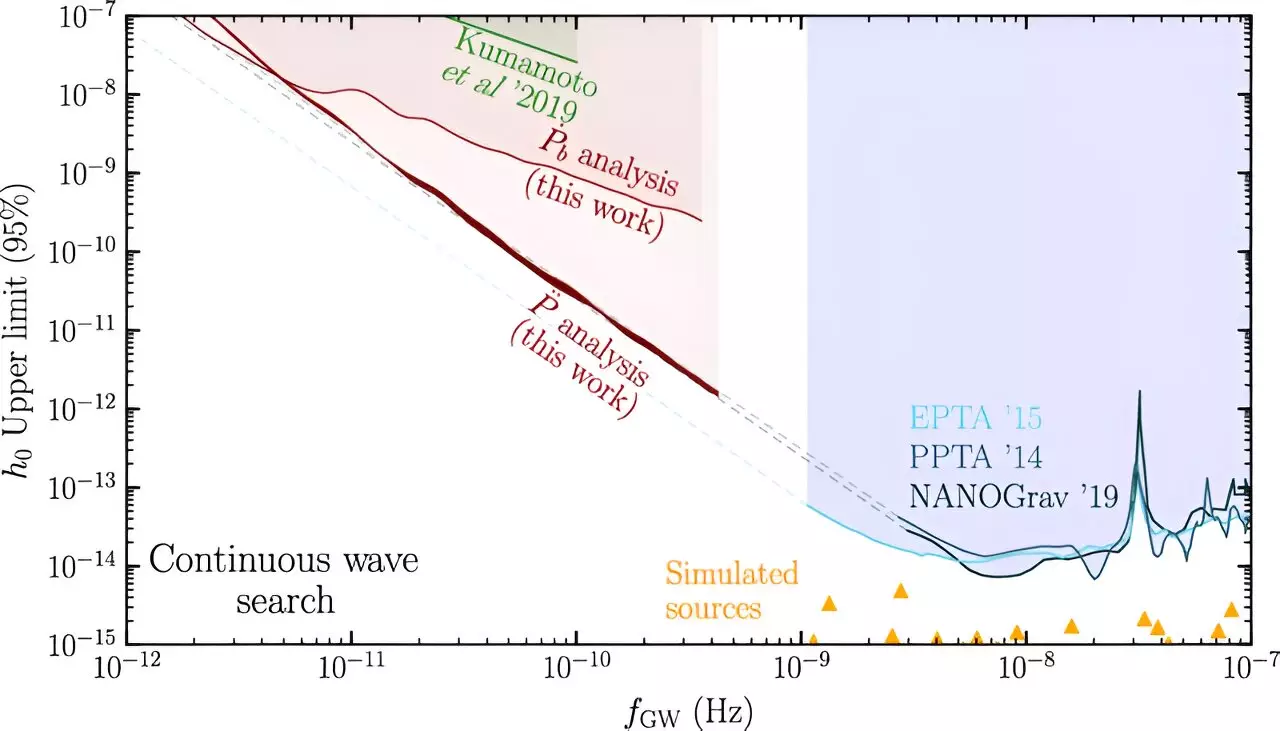Physicists have recently made a breakthrough in the field of astrophysics by developing a method to detect gravity waves with incredibly low frequencies. These waves have the potential to reveal the secrets behind the early phases of mergers between supermassive black holes, which are known to be the heaviest objects in the universe. This new method is capable of detecting gravitational waves that oscillate at a frequency of just once every thousand years, which is 100 times slower than any previously measured gravitational waves.
The team of researchers, led by JEFF DROR, Ph.D., an assistant professor of physics at the University of Florida, and co-author William DeRocco, a postdoctoral researcher at the University of California, Santa Cruz, believe that these low-frequency gravitational waves can provide valuable insights into the early universe. These waves, which reach us from the farthest corners of the universe, have the potential to affect how light travels, offering a unique perspective on cosmic history. By studying these waves, researchers hope to build a more complete picture of the universe’s evolution, similar to the discoveries made through the study of the cosmic microwave background.
The new method of detecting these low-frequency gravitational waves involves analyzing pulsars and neutron stars that emit radio waves at precise intervals. By observing a gradual slowdown in the arrival of these pulses, researchers can identify the presence of new gravitational waves. This innovative approach has allowed scientists to expand their “hearing range” to frequencies as low as 10 picohertz, a significant improvement from previous efforts that could only detect waves at the nanohertz level.
While gravitational waves with frequencies around a nanohertz have been detected in the past, their origins remain largely unknown. There are two main theories regarding the source of these waves. The first theory suggests that they are a result of mergers between supermassive black holes, offering a new avenue for studying these enigmatic objects at the center of galaxies. The second theory proposes that the waves were generated by cataclysmic events in the early universe. By studying gravitational waves at even lower frequencies, researchers hope to differentiate between these two possibilities and gain a deeper understanding of cosmic phenomena.
Looking ahead, Dror and his team plan to analyze newer datasets to further explore the mysteries of the universe. The datasets used in their study were primarily from 2014 and 2015, and significant advancements have been made in pulsar observations since then. Additionally, Dror intends to conduct simulations using UF’s HiPerGator supercomputer to delve deeper into cosmic history. With the computational power of the supercomputer, researchers can efficiently run complex simulations, significantly reducing the time needed to analyze vast amounts of data.
The discovery of low-frequency gravitational waves opens up new possibilities for unraveling the secrets of the universe. By studying these waves, researchers aim to shed light on the origins of supermassive black holes, early universe events, and the overall evolution of cosmic history. The innovative method of detection developed by the team of physicists represents a significant step forward in astrophysics, offering a new window into the wonders of the cosmos.


Leave a Reply